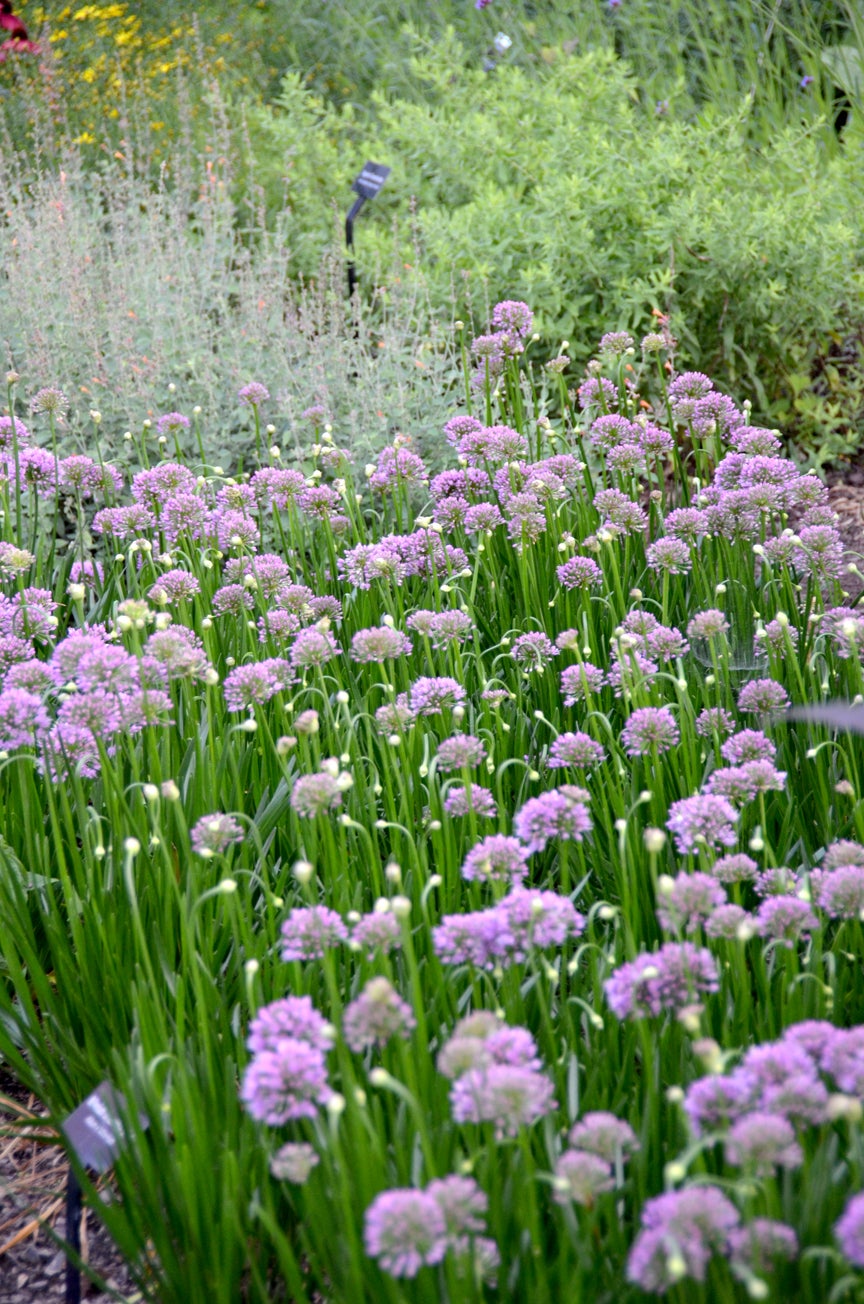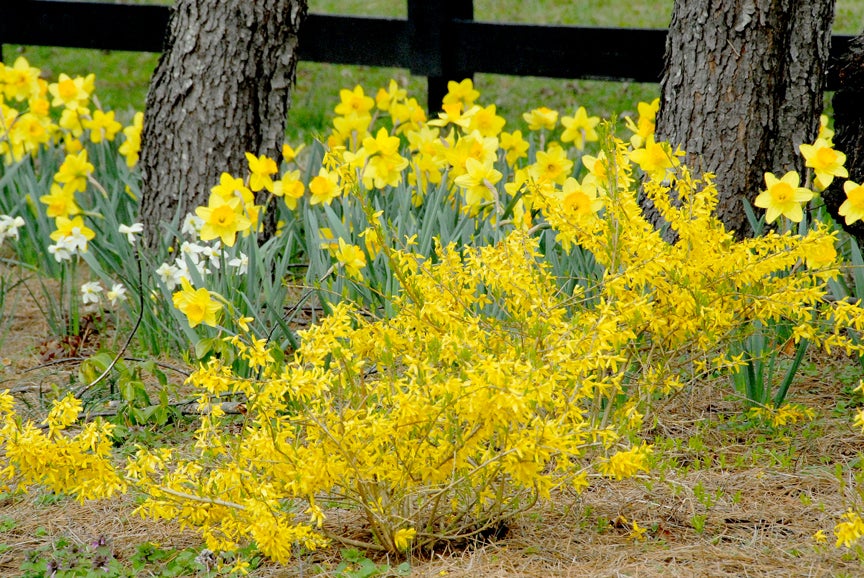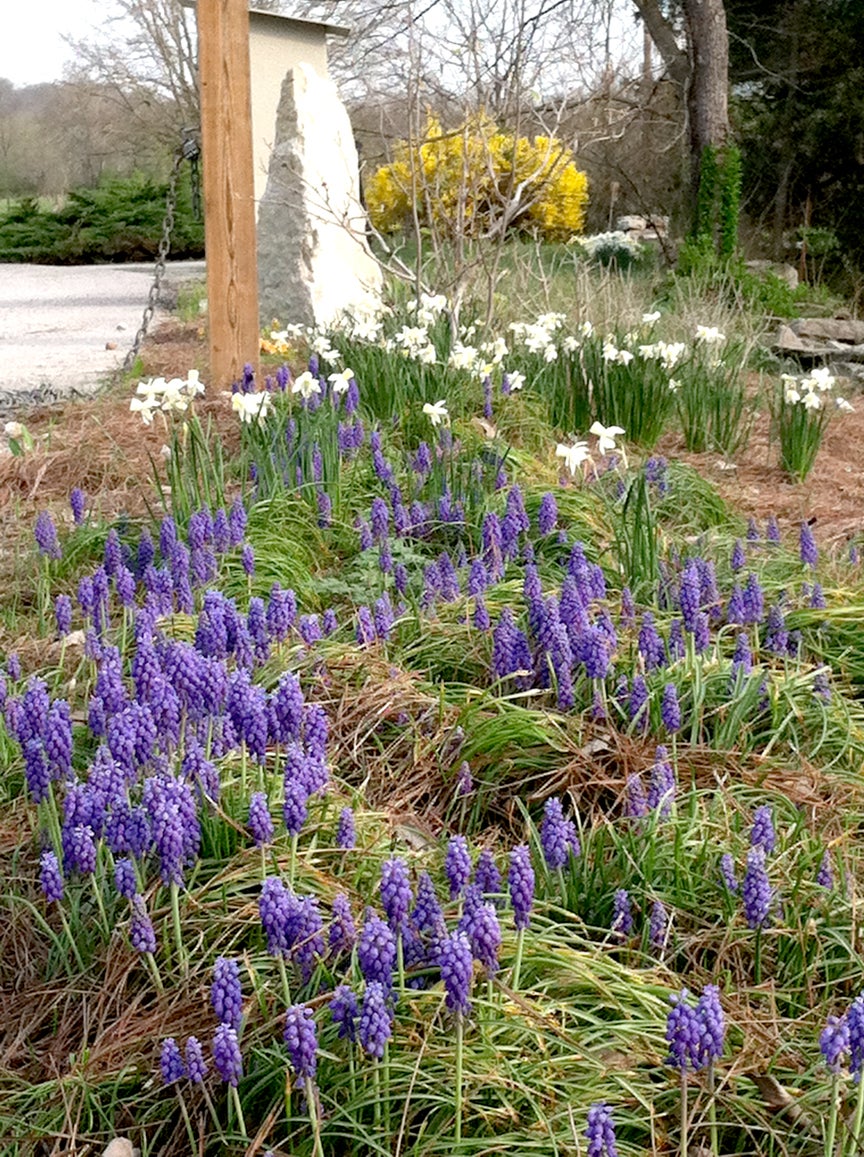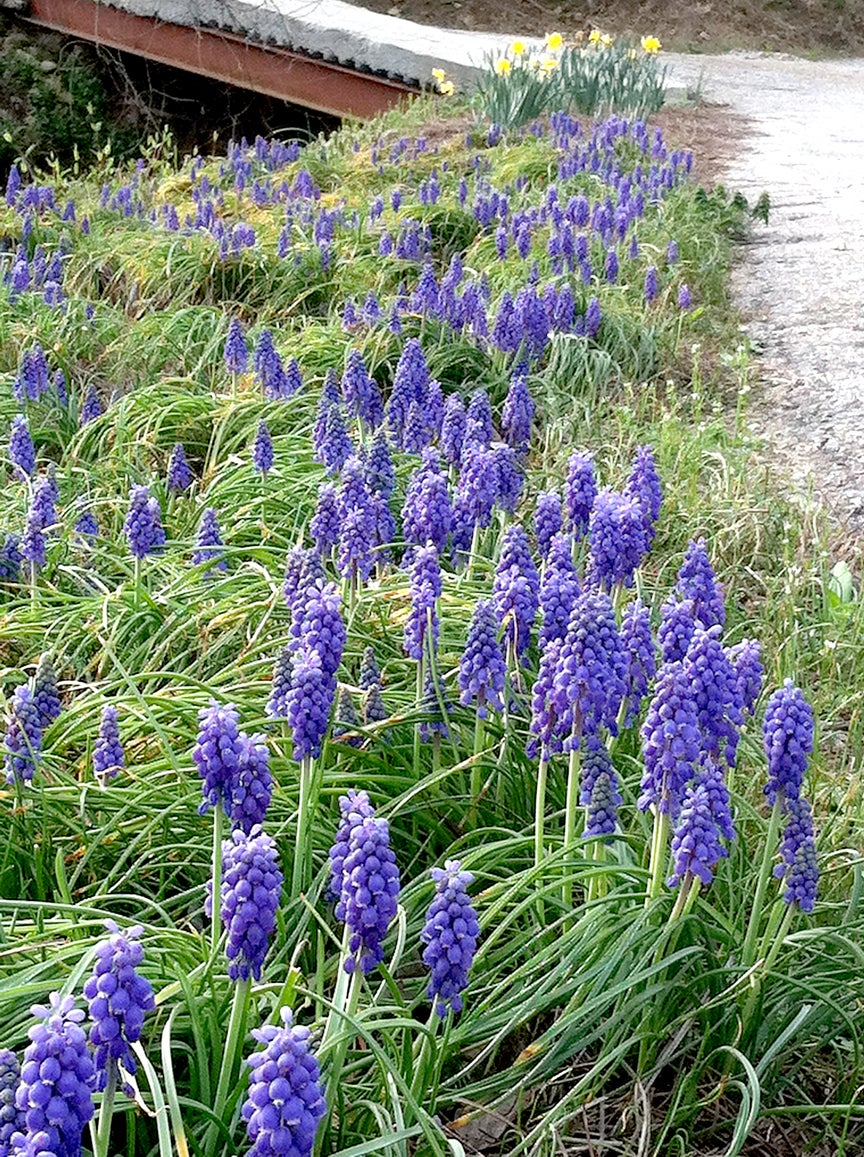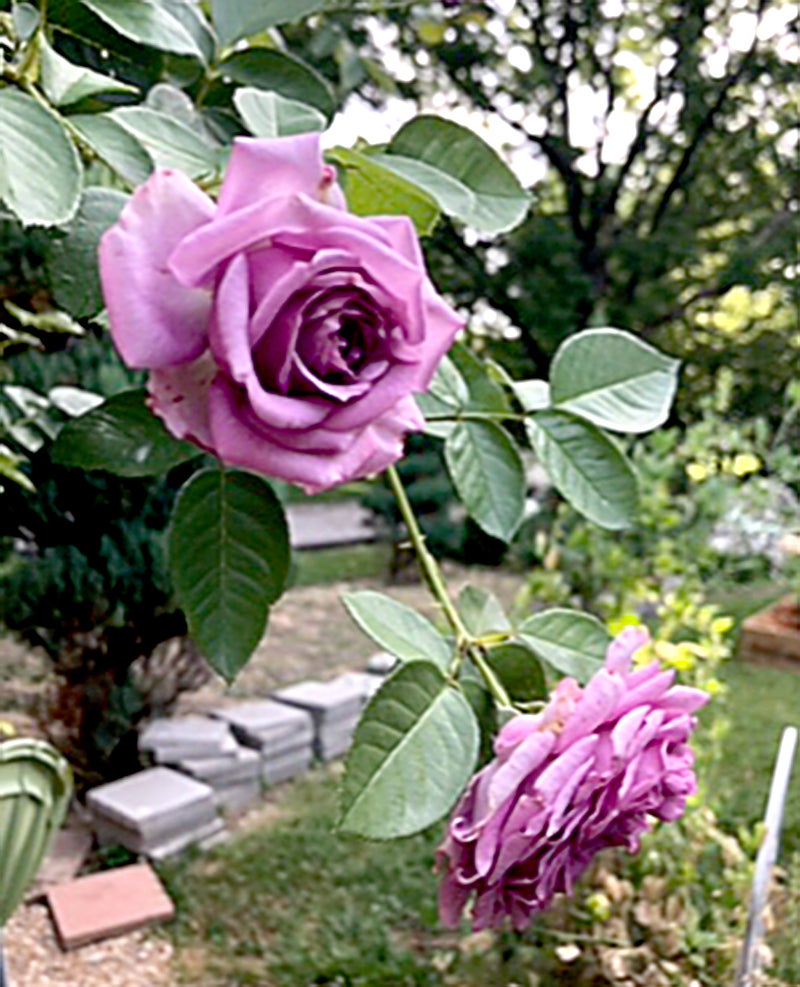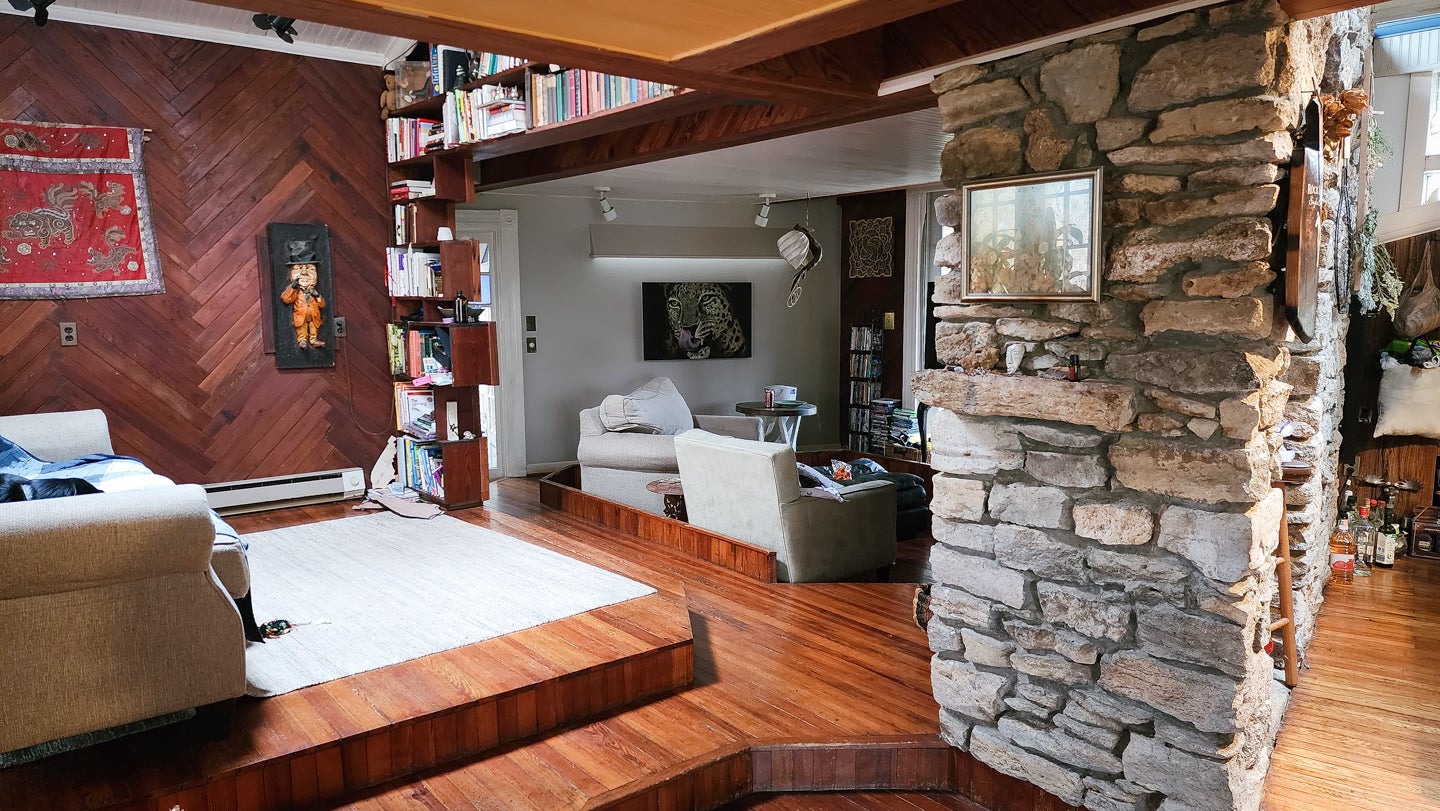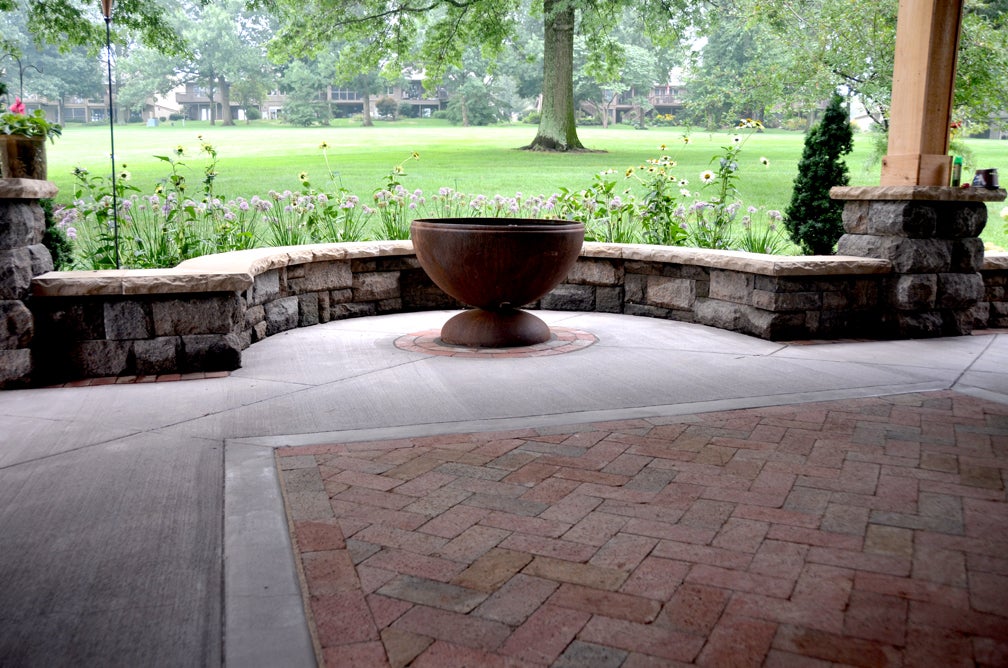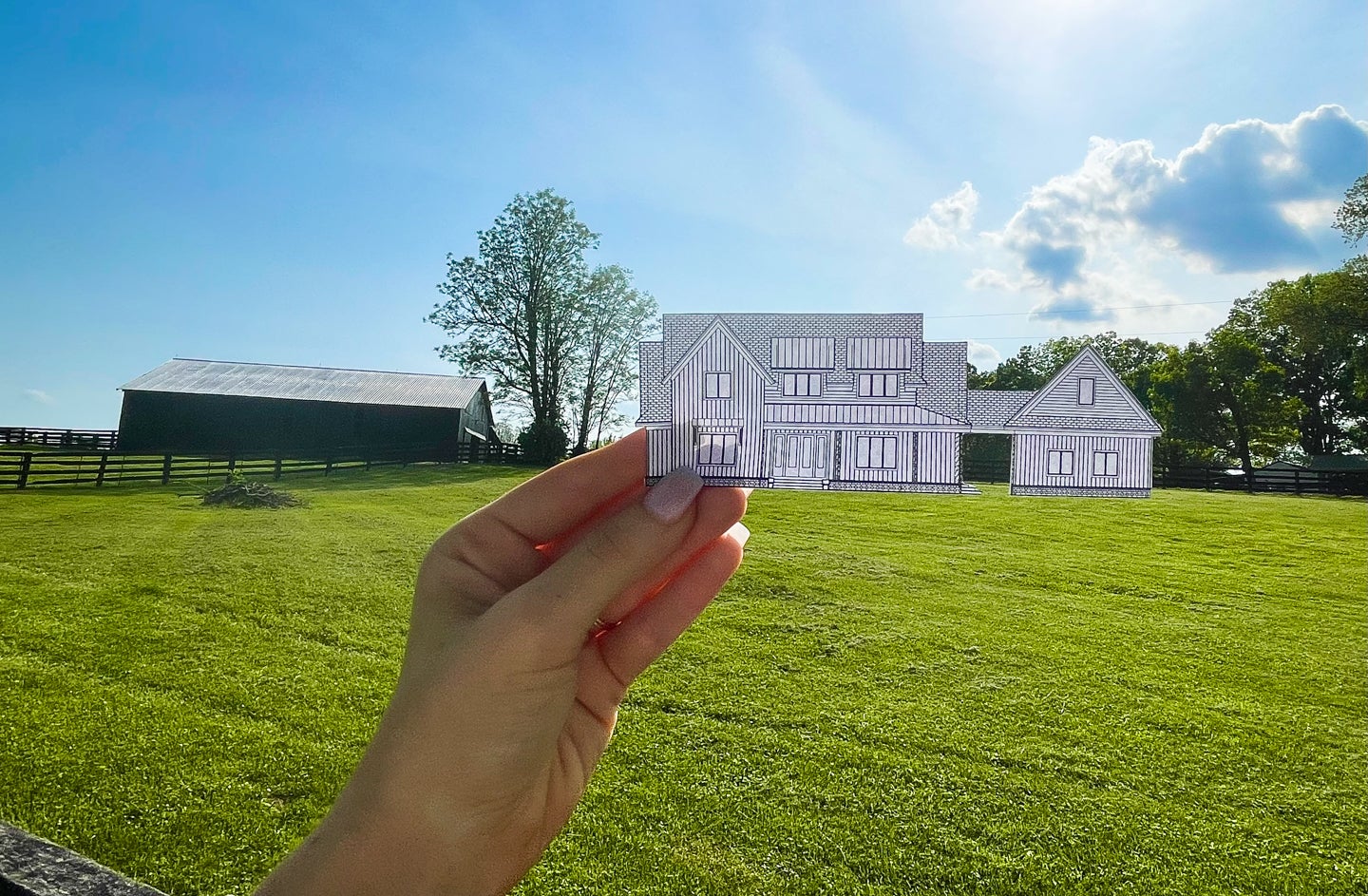With the best of intentions for our deceased loved ones we set out to make their burial sites beautiful. The conditions across the cemetery are vastly different – ranging from full exposure to sun and wind to deep shade with some protection. When considering plants for the cemetery, think about what the plant will grow to with little to no care or pruning, but more importantly, what will preserve the charm and beauty of our historic cemetery.
Although the cemetery must approve tree and shrub plantings, trees and shrubs often obstruct graves — along with the clean aesthetic of the cemetery. There are a few exceptions, especially for large lots, but in general trees and shrubs should be avoided on family plots simply because eventually there will be no one there to maintain them and often they outgrow their designated area. I can only imagine that it is a full-time chore to keep up with the grounds as they are, much less tend to detail pruning on any one lot for perpetuity. As much as we all like to think that we will become the caretakers for these plants, it is not reality. Other plants to avoid are any vining plants and invasive plants. Trees and shrubs definitely have their place at the cemetery, but they belong in well thought out places from a plan so that the existing landscape architecture is complemented.
Deer resistant and drought tolerant plants are also essential qualities on this property. Depending on the location, there are many low growing native grasses and sedges that could also look nice throughout the season. For deep shade areas where turf won’t grow, Pennsylvania Sedge is a great option. While it doesn’t provide color, it does provide interesting texture and eventual full coverage of the ground.
Low growing, mat forming perennials could work as well, but will need to be weeded often, so they aren’t considered a viable long-term solution.
Bulbs are a great way to give spring, summer and fall color and allow for easier maintenance by cemetery crews. Once summer comes, crews can mow or weedeat the dormant foliage just as they would with grass. Some of my favorite bulbs are allium, miniature daffodils/trumpets (Narcissi), snowdrops (Galanthus), rock garden iris (Iris reticulata), and grape hyacinths (Muscari) because they are not often bothered by deer, squirrels and other pests. There are many other bulbs to choose from, but these are some that are tried and true. Autumn crocus are also easy, low and have a great bloom in early fall. Bulbs can also be mingled with the aforementioned low growing grasses or sedges. Late October through early December is perfect for planting bulbs — so get planting! Although the cemetery allows mulched beds, I would also dissuade those unless you are an avid gardener who will tend to the garden at least every two weeks.
The last, easiest option is to just let it be — turf. You won’t often hear me promoting turf, but the cemetery is one place where the simplicity is elegant and how the cemetery was originally designed by Robert Carmichael. Less is really more at the cemetery.
By regulation, adornments and objects of any kind are prohibited, which help maintain a clean look and respect the historic nature of this special place. Wreaths, monument saddles, and other greenery can be placed 7 days before and after Memorial Day and Nov. 15 through Jan. 30. You can find out more on the regulations at frankfortcemetery.org or call the office 502-227-2403.
Andrea Wilson Mueller, APLD, is a native Frankfortian and 2003 magna cum laude graduate of the University of Kentucky College of Design with a bachelors of arts in design. She was raised in the horticulture industry and is the first and only APLD certified landscape designer in the state of Kentucky. She specializes in large-scale residential and commercial outdoor and native garden design.

